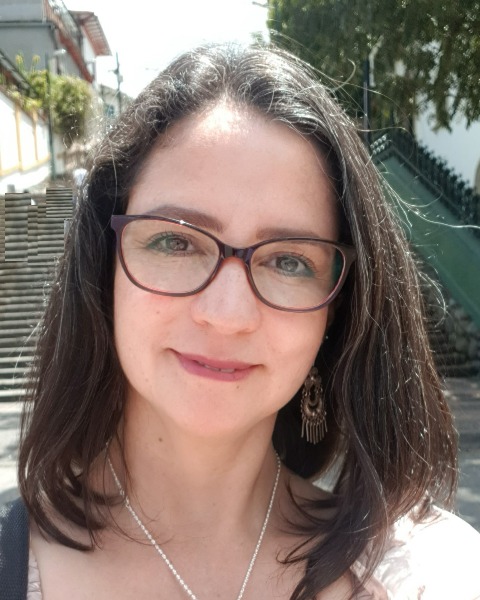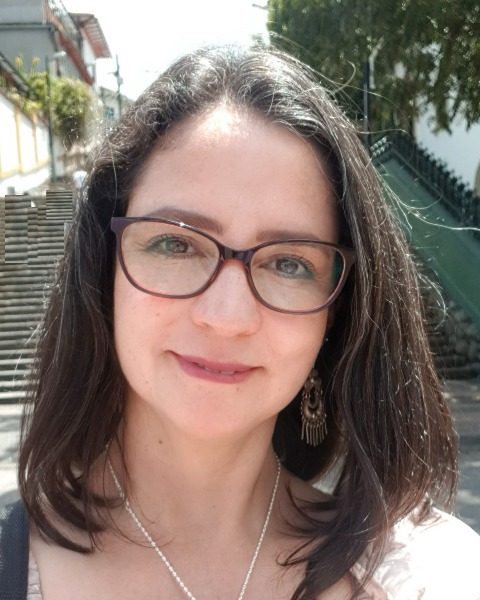Collaborative, Participatory & Empowerment Evaluation
Telling the Story of Harms, Risks, and Needs: Using Participatory Action Research for Community-Based Child Protection Mapping in Humanitarian Settings in Africa and the Americas
-
RE
Radwa El Manssy, MA (she/her/hers)
Sr. Child Protection Advisor, Disaster Response and Management
ChildFund International, United States -

Darcy Strouse, PhD
Director, Research and Learning
ChildFund International, United States -

Darcy Strouse, PhD
Director, Research and Learning
ChildFund International, United States -
DA
David Arango, n/a
Research and Learning Intern
ChildFund International, United States -

Maria Landazuri, Mg (she/her/hers)
Project Coordinator
ChildFund Ecuador
CUENCA, Azuay, Ecuador -
JC
Juan José Castellanos Piedrahita Castellanos Piedrahita, n/a
Project Coordinator
War Child, United States -

Darcy Strouse, PhD
Director, Research and Learning
ChildFund International, United States -

Maria Landazuri De Mora, MA (she/her/hers)
Project Coordinator
CHILDFUND INTERNATIONAL USA
CUENCA, Azuay, Ecuador -
JC
Jessica Castro, n/a
Advisor, Research and Learning
ChildFund International, United States
Presenter(s)
Author(s)
Facilitator(s)
Author(s)
Presenter(s)
Location: Grand Ballroom 10
Abstract Information: The purpose of this demonstration is to share ChildFund International’s (ChildFund) recent experience with and findings from the conduct of a participatory action research (PAR) approach for community-based child protection (CBCP) mapping in humanitarian, emergency or disaster-prone contexts. Use of the PAR approach facilitated the building of collective understandings on child protection issues, actors, and protection mechanisms among community members—and helped communities shape their own actions—or stories (activities, practices, policies)—to address identified child protection and psycho-social support issues. Key PAR outcome areas include the context of the humanitarian crisis, emergency, or disaster and general child protection concerns; Data collection tools include body mapping with children, key informant interviews, and community discussion. Qualitative synthesis is used to analyze and share community-based “stories” about the CBCP mapping findings. The demonstration will share barriers, facilitators, and lessons learned for implementing the PAR in the humanitarian setting versus the development setting.
Relevance Statement: The program evaluation field has placed increased emphasis on developing evaluation approaches that can inform the development of culturally grounded responses and programs for these issues (Wessels, 2015). To develop the culturally grounded responses, it is critical to collect data on community needs and resources through direct community input. A child-focused International Non-Governmental Organization (INGO), ChildFund works directly in communities with local partners (LPs) to help create safe environments for children. During the past decade, ChildFund has developed, implemented, and refined a qualitative, participatory research framework for community-based child protection (CBCP) mapping in the development setting to help vulnerable communities identify and respond to child protection and other issues. The framework involves participatory action research (PAR) through the conduct of rapid ethnographic assessment that derives context-specific, community-level “stories” about: a) knowledge on how child protection systems serve children and b) learning about harms and protection needs for children. Overall, our PAR approach attempts to reveal each community’s conceptualization and perception of child protection issues and formal and informal child protection systems in their communities. Beginning in 2022, ChildFund initiated the adaptation of the PAR approach and its grounded methodology to the humanitarian setting. Our proposed submission shares with the evaluation field methods for and lessons learned from adapting the PAR approach, and its qualitative, storytelling for CBCP issues and needs to an emergency context in three countries: Colombia, Ecuador, and Mozambique. The demonstration of the methodological approach—and its adaptation to the humanitarian setting—informs risk assessment, system strengthening, and future programming and responses in specific communities. Outcome areas for the PAR are: a) the context of the humanitarian crisis, emergency, or disaster; b) general child protection concerns; c) children’s resilience, skills, and participation; and d) response and service delivery mechanisms. Data collection tools include body mapping with children, key informant interviews, and community discussion. Qualitative synthesis is used to analyze and share community-based “stories” about the CBCP mapping findings. As the PAR approach helps communities shape their own actions—or stories (activities, practices, policies)—to address identified child protection and psycho-social support issues, we will compare storytelling methods, results, and nuances in the humanitarian and development settings. Our PAR approach for CBCP mapping reflects the AEA guiding principles by fostering active sharing of learning with all key stakeholders, including diverse perspectives at the community level (including from children) on child protection harms, risks, resources and needs and incorporating the local context. References Wessells, M. (2015). Bottom-up approaches to strengthening child protection systems: Placing children, families, and communities at the center. Child Abuse and Neglect, 43, 8-21. doi: 10.1016/j.chiabu.2015.04.006
